The Origins and History of the Giant Tea Pot Shaped Car
The Giant Tea Pot Shaped Car represents one of the most delightful examples of automotive whimsy in transportation history. These extraordinary vehicles first emerged during the early 20th century as promotional tools for tea companies and roadside attractions. The concept of transforming a functional automobile into a massive tea pot on wheels captured the imagination of both entrepreneurs and the general public.
The earliest documented Giant Tea Pot Shaped Car appeared in the 1920s when creative marketers realized that eye catching vehicle designs could attract customers from considerable distances. These pioneers understood that a car shaped like a giant tea pot would stop traffic and generate conversations, making them perfect mobile advertisements for tea shops, restaurants, and tourist attractions.
During the Great Depression, many business owners turned to innovative marketing strategies to attract customers. The Giant Tea Pot Shaped Car became a symbol of American ingenuity and entrepreneurial spirit. These vehicles were often handcrafted by local artisans who combined automotive engineering with artistic vision to create truly unique transportation experiences.
The golden age of the Giant Tea Pot Shaped Car coincided with the rise of automobile tourism in America. As families began taking road trips across the country, roadside attractions became increasingly important for capturing tourist dollars. A Giant Tea Pot Shaped Car parked outside a diner or gift shop served as an irresistible beacon for travelers seeking memorable experiences.
Design and Engineering Behind Giant Tea Pot Shaped Cars
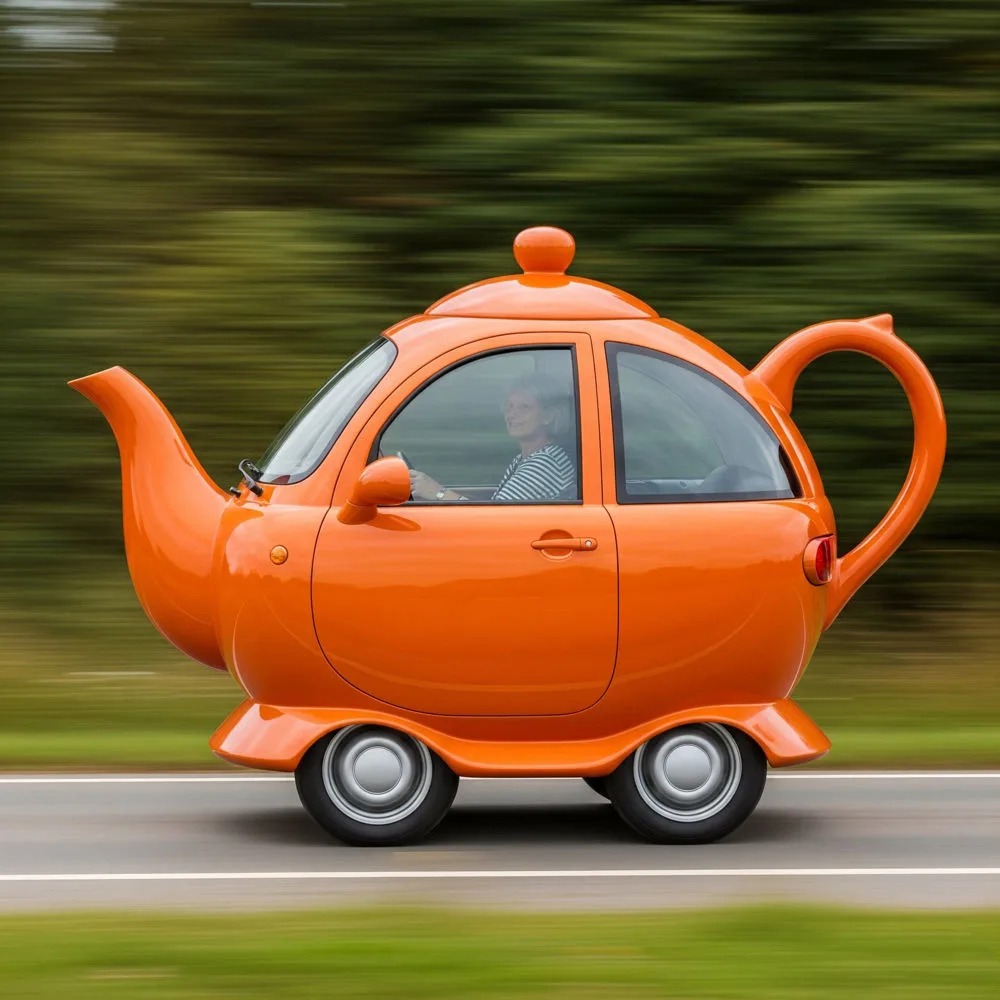
Structural Considerations for Tea Pot Vehicles
Creating a Giant Tea Pot Shaped Car requires careful consideration of both aesthetic appeal and structural integrity. Engineers must balance the distinctive tea pot silhouette with practical automotive requirements such as weight distribution, aerodynamics, and safety regulations. The iconic spout, handle, and lid elements must be securely attached while maintaining the vehicle’s roadworthiness.
The base chassis of a Giant Tea Pot Shaped Car typically utilizes standard automotive platforms modified to accommodate the unique bodywork. Skilled craftsmen construct the tea pot shell using materials ranging from fiberglass to sheet metal, depending on the intended use and budget constraints. The challenge lies in creating a recognizable tea pot shape while ensuring the vehicle remains safe and functional.
Materials and Construction Methods
Modern Giant Tea Pot Shaped Car construction employs advanced materials and techniques that were unavailable to early builders. Contemporary versions often utilize lightweight composites that reduce overall vehicle weight while maintaining structural strength. These materials allow for more elaborate designs and better fuel efficiency compared to their historical counterparts.
The construction process begins with detailed planning and scale drawings to ensure proper proportions. Builders must carefully calculate the placement of the tea pot’s distinctive features to maintain visual authenticity while preserving driver visibility and vehicle stability. The spout typically requires internal reinforcement to prevent damage during transportation and display.
Color Schemes and Decorative Elements
The visual impact of a Giant Tea Pot Shaped Car depends heavily on its color scheme and decorative elements. Traditional designs often feature classic tea pot colors such as ceramic white, royal blue, or elegant silver finishes. Some builders incorporate floral patterns, vintage advertising graphics, or whimsical cartoon elements to enhance the vehicle’s appeal.
Modern interpretations of the Giant Tea Pot Shaped Car frequently embrace bold, contemporary color combinations that photograph well for social media sharing. These vehicles often feature LED lighting systems, chrome accents, and custom paint jobs that transform them into rolling works of art.
Cultural Significance and Impact
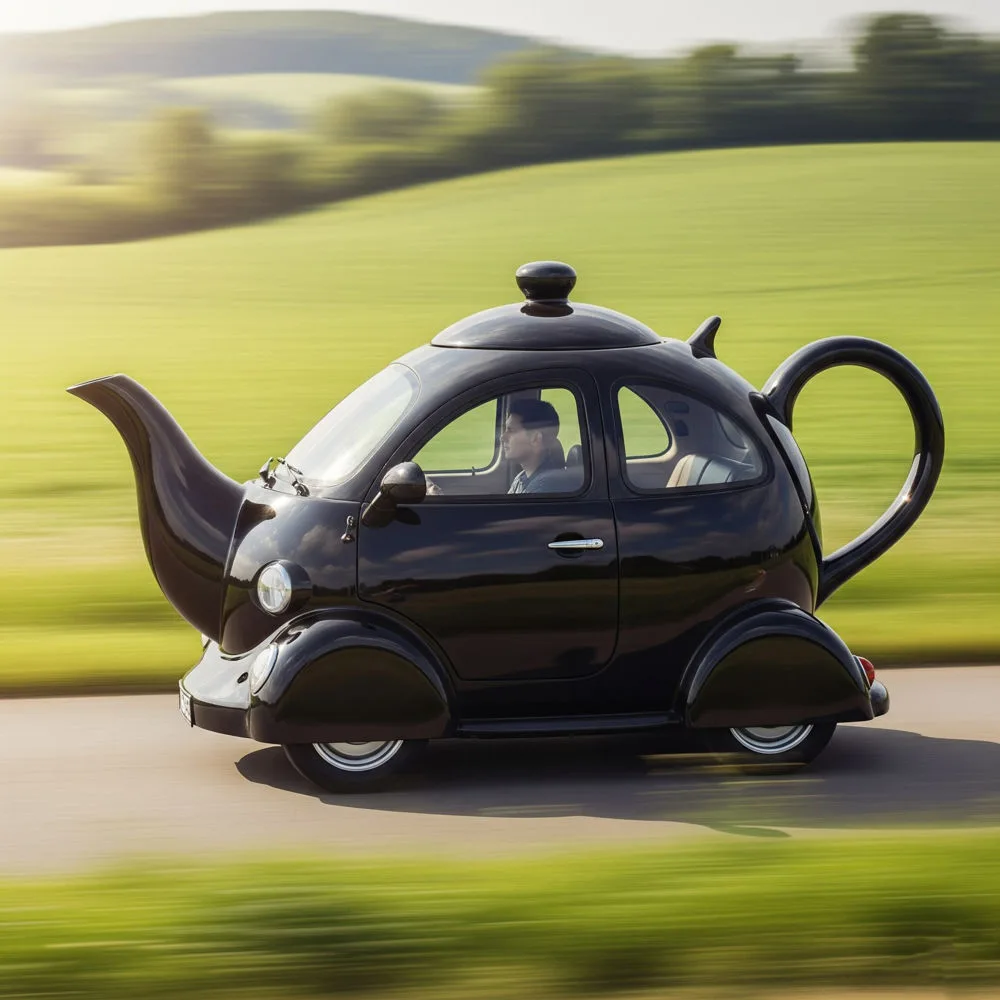
The Giant Tea Pot Shaped Car transcends its role as mere transportation to become a cultural phenomenon that reflects American creativity and humor. These vehicles embody the spirit of roadside America, where entrepreneurs competed to create the most memorable attractions for passing motorists. The tea pot design specifically connects to the important role of tea culture in American social life.
Throughout the mid 20th century, tea consumption in America was associated with hospitality, refinement, and social gathering. A Giant Tea Pot Shaped Car naturally communicated these values to potential customers, suggesting that the associated business offered quality refreshments and a welcoming atmosphere. This cultural connection helped establish these vehicles as effective marketing tools.
The popularity of Giant Tea Pot Shaped Cars also reflects the American fascination with novelty architecture and oversized objects. These vehicles belong to the same cultural tradition that produced giant balls of twine, oversized fruit sculptures, and building shaped like their products. This phenomenon demonstrates how Americans have historically embraced whimsical, attention grabbing designs as legitimate forms of artistic expression.
Famous Examples and Notable Installations
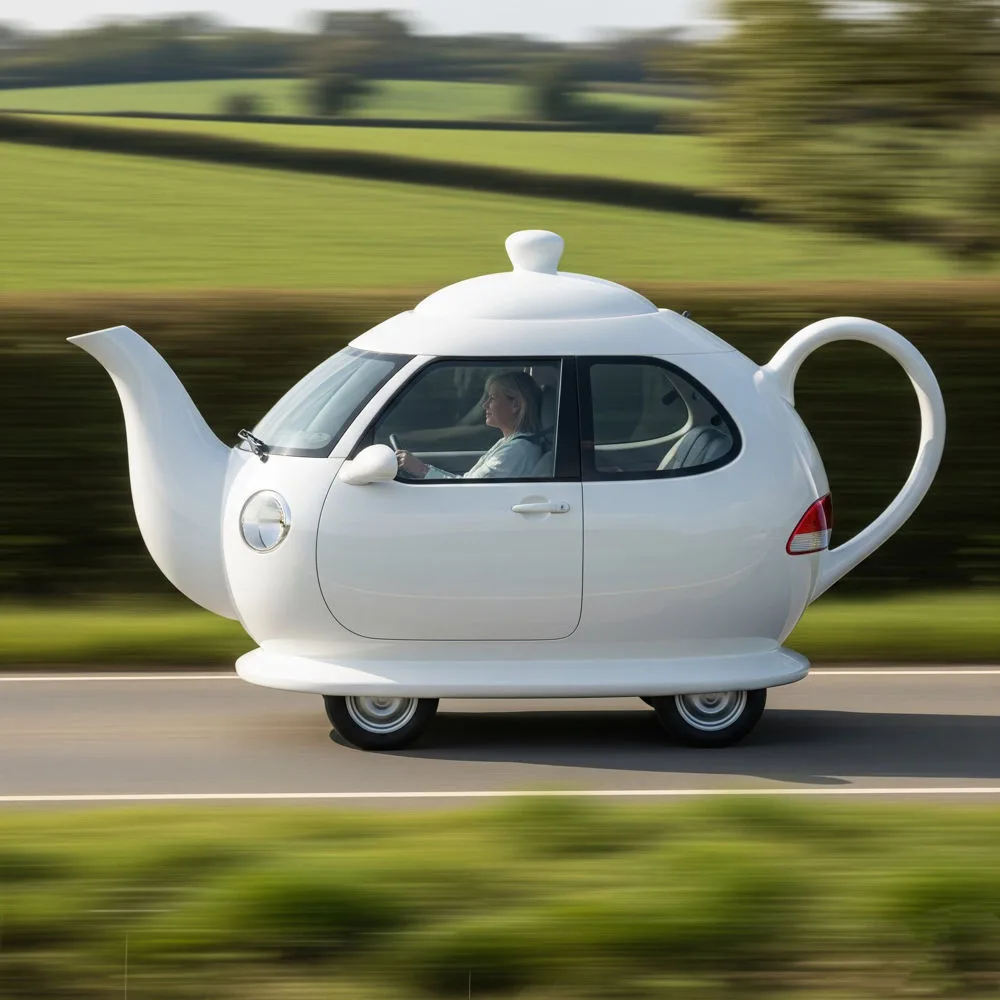
Historic Giant Tea Pot Shaped Cars
Several historic Giant Tea Pot Shaped Cars have achieved legendary status among automotive enthusiasts and roadside attraction aficionados. The Teapot Dome Service Station in Zillah, Washington, built in 1922, featured a tea pot shaped building with an accompanying tea pot vehicle that became a beloved landmark. This installation demonstrated how the Giant Tea Pot Shaped Car concept could extend beyond individual vehicles to encompass entire architectural themes.
Another notable example operated in Pennsylvania during the 1940s, where a local restaurant owner commissioned a Giant Tea Pot Shaped Car to promote his establishment. This vehicle regularly appeared at local parades and festivals, becoming an integral part of the community’s identity. The car’s popularity helped establish the restaurant as a regional destination.
Modern Interpretations and Revival
Contemporary builders have embraced the Giant Tea Pot Shaped Car concept with renewed enthusiasm, creating modern interpretations that honor the original designs while incorporating current technology and materials. These new vehicles often feature improved safety equipment, modern engines, and enhanced comfort features while maintaining the essential tea pot aesthetic.
Social media has played a significant role in the revival of interest in Giant Tea Pot Shaped Cars. These photogenic vehicles generate significant online engagement, making them valuable marketing tools for businesses seeking to create viral content. The combination of nostalgia and novelty appeals to both older generations who remember the original vehicles and younger audiences discovering them for the first time.
International Variations and Interpretations
The Giant Tea Pot Shaped Car concept has inspired similar creations around the world, each reflecting local tea culture and automotive traditions. British versions often incorporate elements of traditional English tea service, while Asian interpretations may feature ceremonial tea pot designs specific to their cultural contexts.
These international variations demonstrate the universal appeal of combining functional transportation with whimsical design elements. Each culture’s interpretation of the Giant Tea Pot Shaped Car reveals unique perspectives on tea culture, automotive design, and public art.
Technical Specifications and Performance
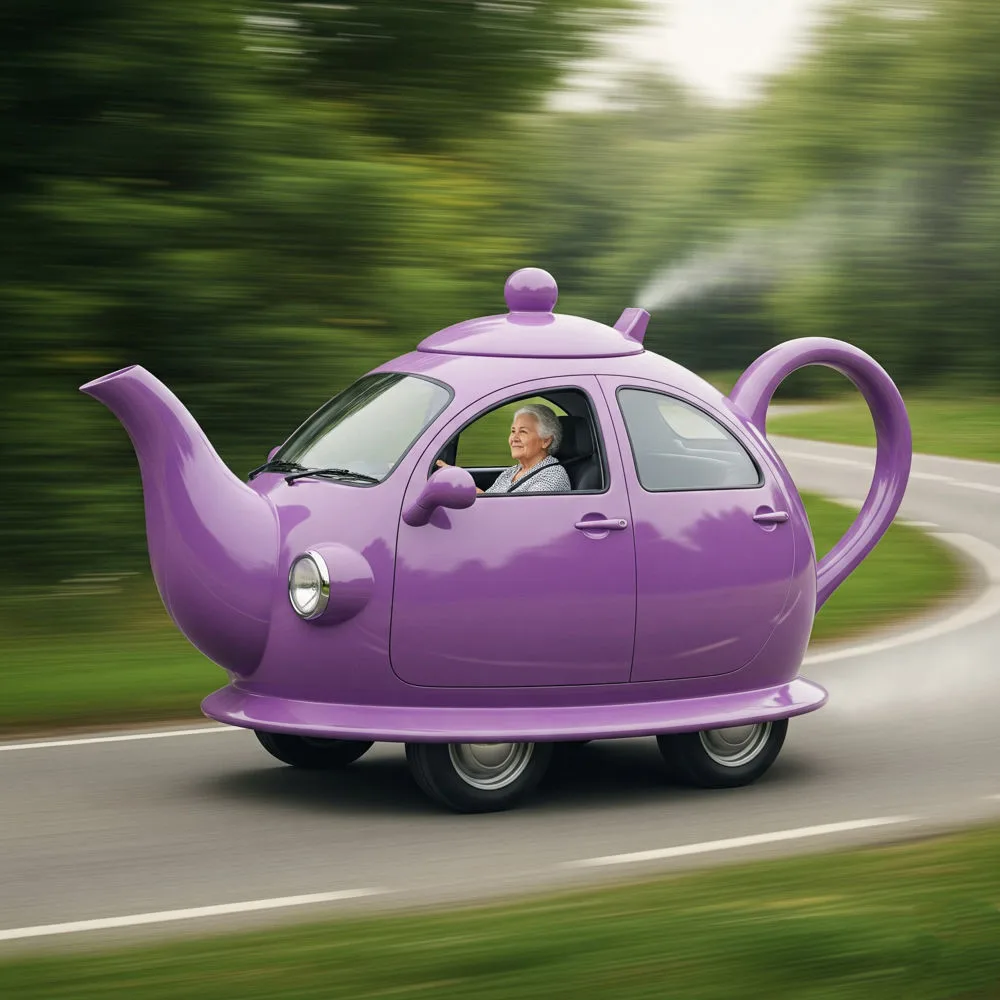
Engine and Drivetrain Options
Most Giant Tea Pot Shaped Cars utilize conventional automotive drivetrains adapted to accommodate the unique bodywork. Engine selection depends on the intended use of the vehicle, with parade cars often featuring smaller, more efficient engines while promotional vehicles may require more powerful options for highway travel. The additional weight and altered aerodynamics of the tea pot body affect performance characteristics compared to standard vehicles.
Builders must consider the impact of the tea pot structure on vehicle handling and stability. The higher center of gravity and altered weight distribution require careful engineering to ensure safe operation. Some Giant Tea Pot Shaped Cars incorporate specialized suspension modifications to compensate for these changes.
Interior Design and Functionality
The interior of a Giant Tea Pot Shaped Car typically reflects the tea theme while maintaining practical functionality. Seating arrangements vary depending on the base vehicle and intended use, with some featuring standard automotive interiors while others incorporate tea house inspired elements such as custom upholstery patterns or decorative trim pieces.
Visibility considerations are crucial in Giant Tea Pot Shaped Car design, as the body modifications can significantly impact driver sight lines. Modern versions often incorporate additional mirrors, cameras, or transparent panels to address these challenges while maintaining the authentic tea pot appearance.
Building Your Own Giant Tea Pot Shaped Car
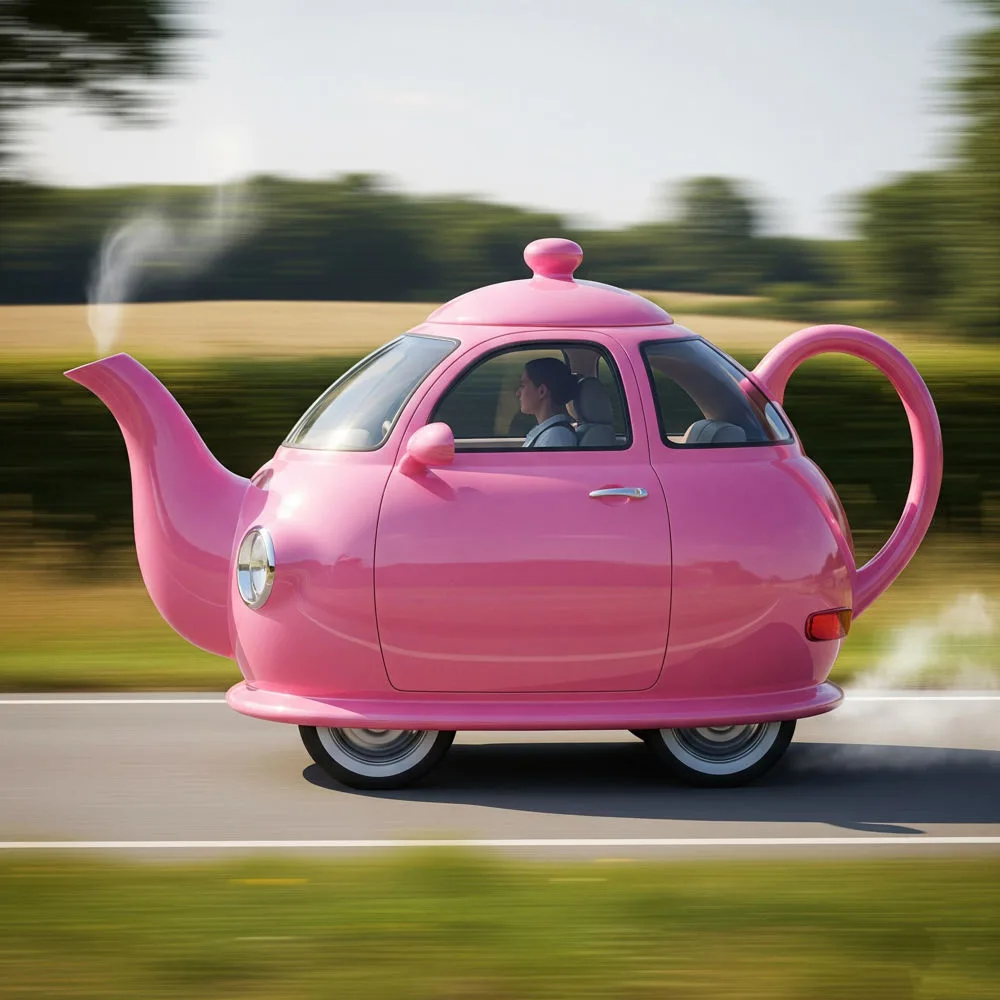
Planning and Design Phase
Creating a custom Giant Tea Pot Shaped Car begins with careful planning and design work. Builders must consider local regulations, intended use, and available resources when developing their concepts. The design phase should include detailed drawings, material specifications, and construction timelines to ensure successful completion.
Legal considerations are essential when building a Giant Tea Pot Shaped Car, as modifications must comply with local vehicle regulations and safety requirements. Builders should consult with automotive professionals and regulatory authorities to ensure their designs meet all applicable standards.
Construction Process and Timeline
The construction of a Giant Tea Pot Shaped Car typically requires several months of dedicated work, depending on the complexity of the design and the builder’s experience level. The process involves chassis preparation, body construction, painting, and final assembly. Each stage requires specific skills and tools, making collaboration with experienced professionals advisable for complex projects.
Quality control throughout the construction process ensures that the finished Giant Tea Pot Shaped Car will provide years of reliable service. Regular inspections and testing help identify potential issues before they become serious problems.
Cost Considerations and Budgeting
Building a Giant Tea Pot Shaped Car involves significant financial investment, with costs varying widely based on design complexity and material choices. Budget considerations should include the base vehicle, construction materials, labor costs, and ongoing maintenance expenses. Many builders find that starting with a simpler design allows them to gain experience while controlling costs.
Professional consultation during the planning phase can help identify potential cost savings and avoid expensive mistakes. Experienced builders often recommend focusing on quality construction rather than elaborate features for first time projects.
The Future of Giant Tea Pot Shaped Cars
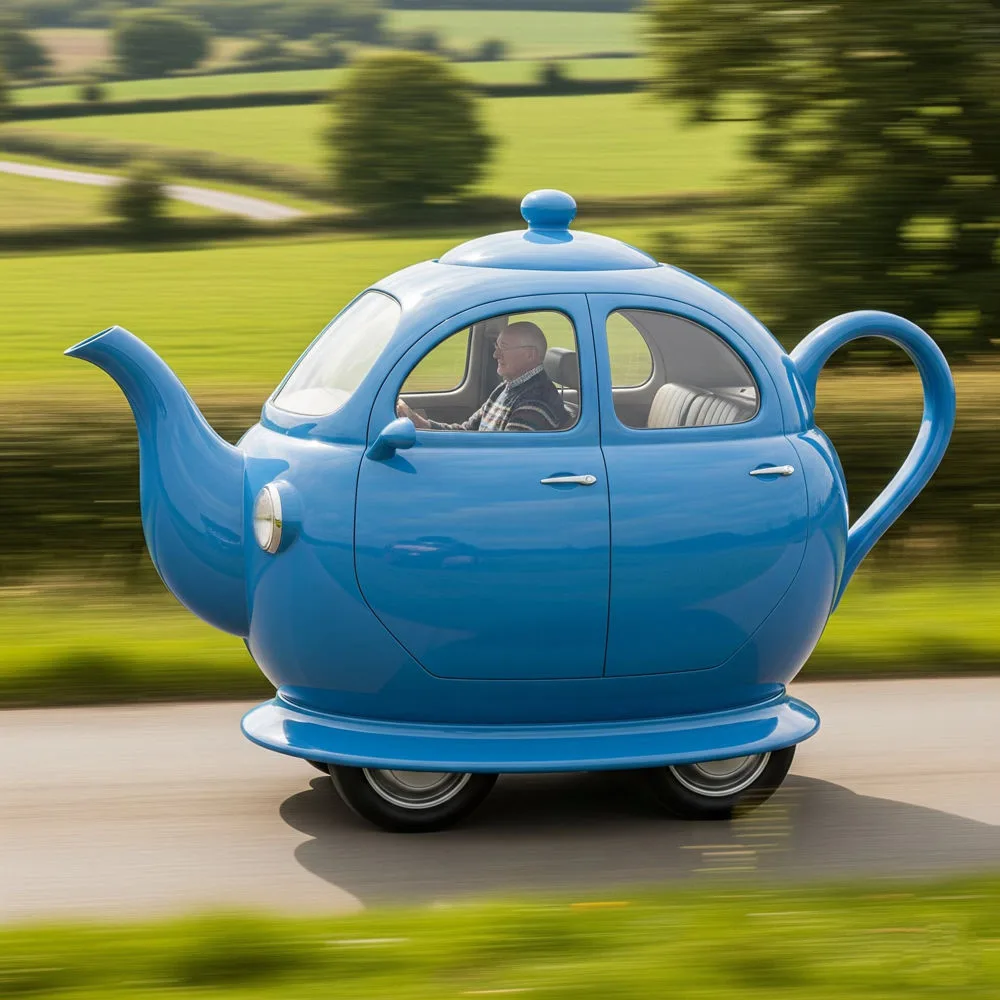
Electric and Hybrid Technology Integration
Modern environmental concerns and advancing technology are influencing the future development of Giant Tea Pot Shaped Cars. Electric and hybrid powertrains offer opportunities to create more efficient and environmentally friendly versions while maintaining the distinctive aesthetic appeal. These technologies may also enable new design possibilities through reduced mechanical complexity.
The integration of modern technology extends beyond powertrains to include advanced safety systems, navigation equipment, and communication tools. These improvements can enhance both the functionality and appeal of Giant Tea Pot Shaped Cars for contemporary applications.
Digital Age Marketing and Social Media
The rise of social media has created new opportunities for Giant Tea Pot Shaped Cars to serve as marketing tools. These photogenic vehicles generate significant online engagement, making them valuable assets for businesses seeking to create viral content. The combination of nostalgia and novelty appeals to diverse audiences across multiple platforms.
Virtual reality and augmented reality technologies may also create new ways to experience Giant Tea Pot Shaped Cars, allowing people to explore these unique vehicles without physical access. These technologies could help preserve the memory of historic examples while inspiring new generations of builders and enthusiasts.
Conclusion
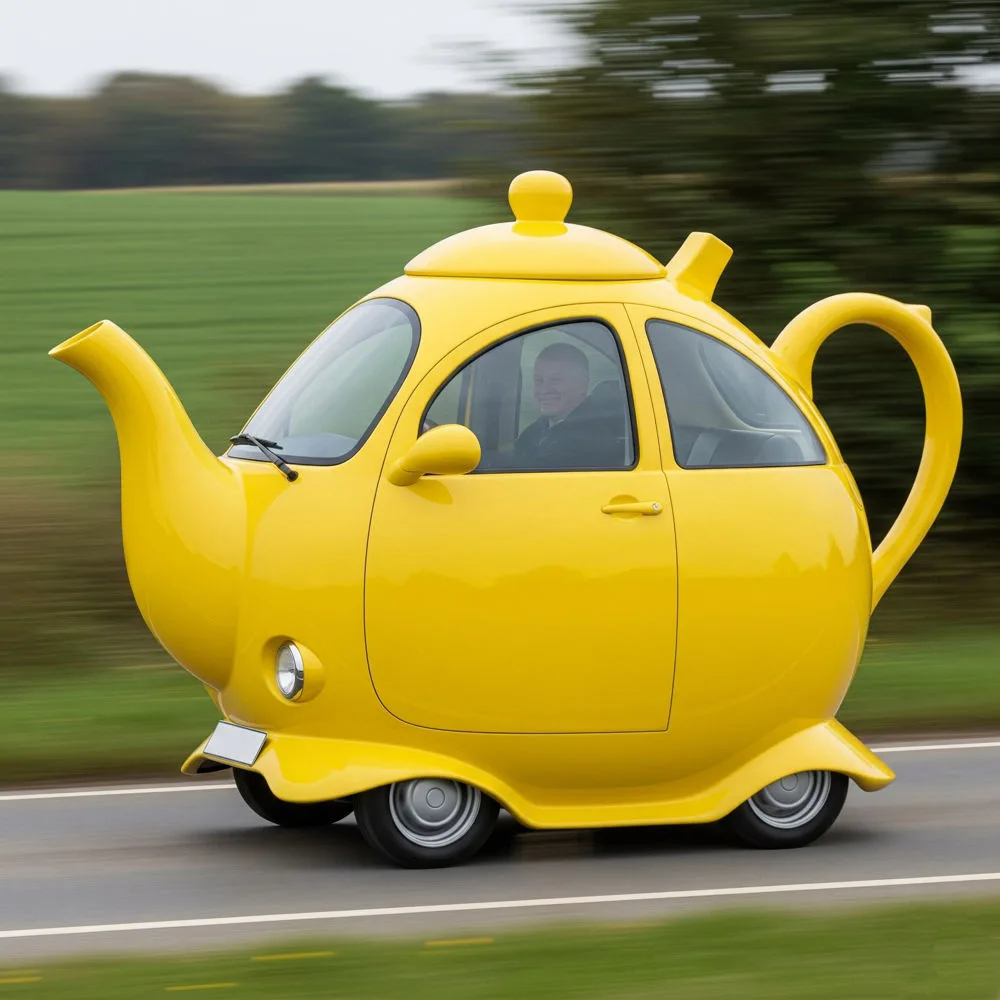
The Giant Tea Pot Shaped Car represents a unique intersection of automotive engineering, artistic expression, and cultural significance that continues to captivate audiences decades after the first examples appeared on American roads. These remarkable vehicles embody the spirit of innovation and whimsy that has long characterized American entrepreneurship and creative expression.
From their origins as promotional tools during the early automobile age to their current status as beloved examples of roadside Americana, Giant Tea Pot Shaped Cars have maintained their ability to surprise, delight, and inspire. The careful balance of functional transportation and artistic vision required to create these vehicles demonstrates the remarkable creativity of their builders and the enduring appeal of their concept.
The ongoing interest in Giant Tea Pot Shaped Cars reflects broader cultural trends toward uniqueness, authenticity, and memorable experiences in an increasingly digital world. These tangible examples of human creativity provide a welcome contrast to standardized modern transportation while connecting us to the rich history of American automotive culture.
As we look toward the future, the Giant Tea Pot Shaped Car concept will likely continue to evolve, incorporating new technologies and design approaches while maintaining the essential charm that has made these vehicles beloved for generations. Whether preserved in museums, restored by dedicated enthusiasts, or recreated by contemporary builders, the Giant Tea Pot Shaped Car will remain an enduring symbol of the power of imagination to transform the ordinary into the extraordinary.
The legacy of the Giant Tea Pot Shaped Car extends beyond its immediate visual impact to encompass broader themes of creativity, community, and cultural expression. These vehicles remind us that transportation can be more than mere functionality, serving as canvases for artistic expression and vehicles for bringing joy to others. In a world that often prioritizes efficiency over delight, the Giant Tea Pot Shaped Car stands as a testament to the enduring value of whimsy and wonder in human experience.

